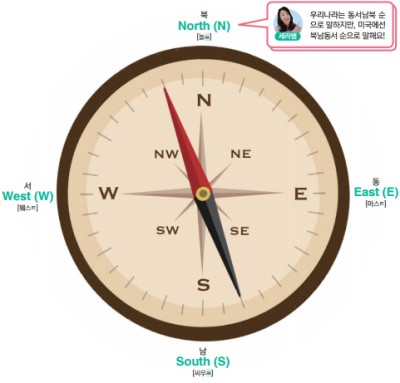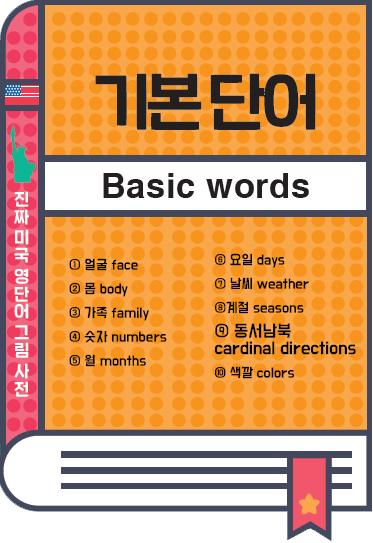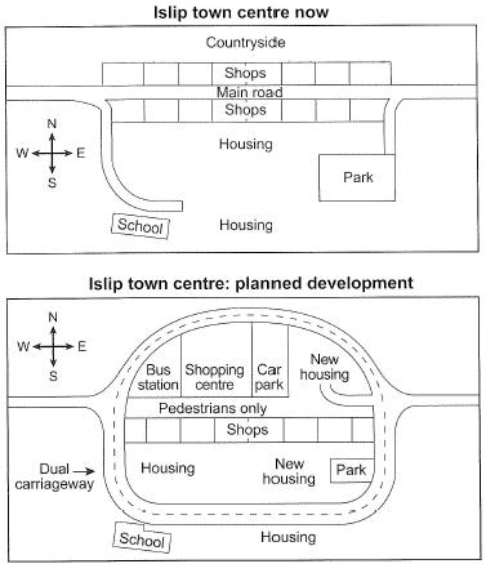동서남북 영어로
이 방향성 표현은 한국어에서 매우 흔하게 사용되며, 일상 생활에서 지리적인 정보를 제공하거나 방향을 나타낼 때 사용된다. 동서남북은 또한 지도에서도 널리 사용되며, 사람들이 어느 위치를 가리킬 때 도움이 된다. 이것은 한국 문화에서 중요한 개념이다. 또한 동서남북은 국제적인 표현이기도 한데, 많은 언어에서도 유사한 용어가 사용된다. 동서남북 방향을 영어로 표현하는 방법에 대해 알아보자.
동쪽의 의미와 영어 표현
동쪽은 해 동쪽이다. 일출이 일어나는 방향이다. 동쪽은 또한 새로운 시작이나 희망의 상징으로도 사용된다. 영어에서는 “east”라는 단어로 동쪽을 표현한다.
예시:
– The sun rises in the east. (해는 동쪽에서 떠올라요.)
– Let’s head east to find the nearest gas station. (가장 가까운 주유소를 찾으려면 동쪽으로 가요.)
서쪽의 의미와 영어 표현
서쪽은 해 서쪽이다. 일몰이 일어나는 방향이다. 서쪽은 일상 생활에서 종료나 끝을 의미하기도 한다. 영어에서는 “west”라는 단어로 서쪽을 표현한다.
예시:
– The sun sets in the west. (해는 서쪽으로 지는군요.)
– Let’s watch the sunset from the west coast. (서해안에서 일몰을 보러 가요.)
남쪽의 의미와 영어 표현
남쪽은 해 남쪽이다. 온난한 지역이나 햇빛이 잘 드는 지역을 가리킨다. 남쪽은 또한 사람들이나 동물들이 향하는 방향으로도 사용된다. 영어에서는 “south”라는 단어로 남쪽을 표현한다.
예시:
– Let’s go on a vacation to a warm place down south. (따뜻한 곳으로 남쪽으로 휴가를 가요.)
– The birds fly south for the winter. (새들은 겨울에 남쪽으로 날아갑니다.)
북쪽의 의미와 영어 표현
북쪽은 해 북쪽이다. 상쾌하고 차가운 지역을 가리킨다. 북쪽은 탐험의 영역이자 엄폐된 공간으로도 사용된다. 영어에서는 “north”라는 단어로 북쪽을 표현한다.
예시:
– We’re heading north to visit the Arctic. (북극을 방문하기 위해서 북쪽으로 가요.)
– The compass needle points to the north. (나침반이 북쪽을 가리킵니다.)
동서남북의 반대 방향 표현
동서남북의 반대 방향은 북쪽, 남쪽, 서쪽, 동쪽 순서로 표현된다. 이것은 일반적인 관례이며, 지도의 방위를 표시할 때 자주 사용된다. 이것은 영어에서도 마찬가지이다.
예시와 함께 반대 방향에 대한 이해 돕기:
– Let’s head south to escape the cold weather. (추운 날씨를 피하기 위해 남쪽으로 가요.)
– The wind is blowing from the west. (바람이 서쪽에서 부는군요.)
동서남북의 지리적 의미와 관련 용어
동서남북은 지리적인 의미를 가지며, 이와 관련된 몇 가지 용어가 있다. 예를 들어, “due east”는 정확한 동쪽을 가리키며, “northwest”는 북서쪽을 가리킨다. 이러한 용어를 사용하여 동서남북을 좀 더 자세히 설명할 수 있다.
지리적인 관점에서 동서남북을 이해하는 방법 소개:
– The village is located due east of the city. (그 마을은 도시의 정확한 동쪽에 위치해 있습니다.)
– Let’s hike to the northwest to reach the mountain peak. (산 정상에 도달하기 위해 북서쪽으로 등산해 봅시다.)
동서남북과 문화적 차이
동서남북은 문화적인 차이와 연결되어 있다. 서양 문화에서는 동서남북 보다는 주로 “북쪽(Arctic, North Pole)”과 “남쪽(Antarctica, South Pole)”을 사용한다. 동양 문화에서는 동서남북이 중요한 역할을 한다. 그러나 영어에서도 동서남북이 중요한 개념이며, 많은 사람들이 이를 이해하고 사용한다.
동서남북 관련 속담, 표현, 영어 속어 등
동서남북은 다양한 속담, 표현, 영어 속어 등과 연관되어 있다. 예를 들어, “East or west, home is the best”는 동서남북을 사용하여 집이 최고라는 의미를 전달한다. 이러한 속담, 표현, 영어 속어 등을 사용하여 동서남북의 개념을 더 깊게 이해할 수 있다.
이렇게 동서남북은 한국어에서 자주 사용되는 방향성 표현이다. 동쪽은 해 동쪽을, 서쪽은 해 서쪽을, 남쪽은 해 남쪽을, 북쪽은 해 북쪽을 가리키며, 이들은 영어로 각각 “east”, “west”, “south”, “north”로 표현된다. 이러한 방향성 표현은 지리적인 정보를 전달하거나 방향을 나타내는 데 자주 사용된다. 또한 동서남북은 국제적으로도 유사한 표현이며, 많은 언어에서 사용된다. 동서남북과 관련된 속담, 표현, 영어 속어 등을 통해 그 개념을 더 깊게 이해할 수 있으며, 동서남북은 동양문화에서 중요한 개념으로 사용된다.
사용자가 검색한 키워드: 동서남북 영어로 4방위 영어로, 동서남북 영어 순서, 동서남북 방향, 동서남북 방향 영어, 남쪽 영어로, 방향 영어로, 북쪽 영어로, 동서남북 일본어로
Categories: Top 28 동서남북 영어로
[친절한 파닉스] 파닉스로 배우는 왕초보 영단어 \”동서남북 말하기\”
여기에서 자세히 보기: taomalumdongtien.net
4방위 영어로
The ability to speak English in all directions is crucial in today’s globalized world. With increasing international interactions, being able to communicate fluently and confidently in English has become a valuable skill. 4방위 영어로 focuses on developing a well-rounded English proficiency, ensuring individuals are able to engage in conversations, understand and express themselves accurately, regardless of the context or direction the conversation takes.
Benefits of 4방위 영어로:
1. Enhances Communication Skills: One of the key benefits of 4방위 영어로 is the improvement of overall communication skills. By practicing speaking English in all directions, individuals become more adaptable and flexible in their conversations. This ability helps them effectively express their thoughts, opinions, and ideas, as well as comprehend others’ viewpoints.
2. Builds Confidence: Engaging in conversations in different directions helps individuals build confidence in their English speaking abilities. The more practice they have, the more comfortable they become in their linguistic skills. Over time, this increased confidence allows individuals to take part in discussions, debates, and presentations with ease.
3. Develops Listening Skills: 4방위 영어로 also emphasizes on active listening. When practicing conversations in all directions, individuals are trained to listen attentively to others’ words, expressions, and tones. This skill not only improves their understanding of the content but also enables them to accurately interpret the speaker’s intention and emotions, leading to better communication outcomes.
4. Enhances Vocabulary and Grammar: Consistently practicing speaking English in all directions helps individuals expand their vocabulary and improve their grammar skills. Engaging in diverse conversations exposes them to various linguistic patterns, phrases, and idiomatic expressions commonly used in different contexts. This exposure facilitates a deeper understanding of the language, resulting in a more comprehensive grasp of English vocabulary and grammar rules.
Developing 4방위 영어로 Skills:
1. Practice Interactions: Engage in conversations with English speakers from different backgrounds. This can be done through language exchange programs, conversation clubs, or online language forums. This practice exposes individuals to diverse communication styles, accents, and vocabulary, enabling them to adapt their speaking skills accordingly.
2. Watch Movies and TV Shows: Watch English-language movies and TV shows, preferably with subtitles. This helps individuals become familiar with different accents, improves listening skills, and exposes them to various conversational contexts.
3. Read Widely: Read a variety of English texts, such as newspapers, magazines, books, blogs, or online articles. This exposes individuals to different writing styles and vocabulary, broadening their understanding of English literature and enhancing their ability to communicate effectively.
4. Seek Feedback: Regularly seek feedback from native English speakers or language instructors to identify areas of improvement. This feedback will help individuals refine their pronunciation, grammar, and overall communication skills.
FAQs:
Q: How long does it take to develop 4방위 영어로 skills?
A: The time it takes to develop 4방위 영어로 skills varies from person to person. It depends on factors such as prior language learning experience, dedication to practice, individual learning pace, and exposure to English. Consistent practice, combined with immersive language learning experiences, will expedite the development process.
Q: Is it necessary to speak English in all directions?
A: Speaking English in all directions is not mandatory, but it has significant benefits. It enhances overall communication skills, increases confidence, and enables individuals to effectively navigate various linguistic scenarios. However, individuals can still achieve proficiency in English without practicing in all directions.
Q: How can I improve my pronunciation in 4방위 영어로?
A: Improving pronunciation in 4방위 영어로 requires consistent practice and exposure to English speakers. Engaging in conversations, listening to native English speakers, and paying attention to speech patterns can all contribute to improving pronunciation skills. Additionally, seeking guidance from a language instructor can provide targeted exercises to enhance pronunciation.
In conclusion, 4방위 영어로 plays a significant role in developing well-rounded English speaking skills. By practicing conversations in all directions, individuals can enhance their communication, listening, vocabulary, grammar, and overall English proficiency. While it requires dedication, consistent practice, and exposure to diverse linguistic contexts, the rewards are invaluable in today’s globalized world. So, let’s embrace the idea of 4방위 영어로 and explore the exciting possibilities it brings.
동서남북 영어 순서
The 동서남북 영어 순서 comes from the Sino-Korean numbering system, which uses the Chinese characters for “east,” “west,” “south,” and “north” in ascending order. The order is as follows:
1. 동 (Dong) – East
2. 서 (Seo) – West
3. 남 (Nam) – South
4. 북 (Buk) – North
It is important to note that this order is not commonly used in English, but rather specific to Korean. Understanding and familiarizing oneself with this convention will allow for effective communication and comprehension when discussing directions in Korean.
Let’s explore each direction in detail:
1. 동 (Dong) – East: 동 is the Korean term for “east.” It represents the direction in which the sun rises and can also be associated with the beginning or birth of something. In terms of geographical locations, 동 refers to the eastern side of an area.
2. 서 (Seo) – West: 서 is the Korean term for “west.” It represents the direction in which the sun sets and can be associated with endings or decline. When referring to geographical locations, 서 represents the western side of an area.
3. 남 (Nam) – South: 남 is the Korean term for “south.” It represents the direction toward the equator and can be associated with warmth and growth. Geographically, 남 refers to the southern side of an area.
4. 북 (Buk) – North: 북 is the Korean term for “north.” It represents the direction away from the equator, typically associated with coldness and distance. Geographically, 북 refers to the northern side of an area.
FAQs
Q1: Why is the 동서남북 영어 순서 different from the English convention?
A1: The 동서남북 영어 순서 is derived from the Sino-Korean numbering system, which has a significant influence on Korean language and culture. This system assigns specific numbers to each of the cardinal directions, resulting in a different order compared to English.
Q2: In what situations is understanding 동서남북 영어 순서 essential?
A2: Understanding the 동서남북 영어 순서 is crucial when giving or receiving directions in Korean. This knowledge allows for clear and effective communication, especially when referring to geographical locations or providing navigation instructions.
Q3: Are there any exceptions to the 동서남북 영어 순서 rule?
A3: In some cases, people might use the English convention when communicating directions in Korean, especially in more casual or informal settings. However, it is still recommended to adhere to the 동서남북 영어 순서, as it is the traditional and widely accepted method.
Q4: How can I easily remember the 동서남북 영어 순서?
A4: Mnemonic devices can be useful for remembering the 동서남북 영어 순서. For example, a popular mnemonic is “나비 동물 서클 북쪽” (Nabi Dongmul Seokeul Bukjjok), which translates to “Butterfly, Animals, Circle, North.”
In conclusion, 동서남북 영어 순서 is the traditional way of saying directions in English when speaking Korean. It is important to remember that this order differs from the English convention and understanding it is crucial for effective communication. By familiarizing yourself with the 동서남북 영어 순서, you can confidently navigate and give directions in Korean.
동서남북 방향
동서남북은 우리 생활에서 매우 중요한 개념 중 하나입니다. 이것은 방향을 나타내는 단어로, 동서남북 방향을 잘 이해한다면 길을 잃지 않고 목적지에 도달할 수 있을 것입니다. 이 글에서는 동서남북 방향에 대해 깊이 있게 다루고자 합니다.
동서남북 방향은 지리적인 위치를 나타내는데 사용되며, 일상에서 주로 나침반을 사용하여 알아낼 수 있습니다. 동쪽은 해가 뜨는 방향을 가리키며, 서쪽은 해가 지는 방향을 가리킵니다. 남쪽은 태양의 위치와 반대로, 해가 뜨는 방향의 왼쪽, 즉 태양이 저물 떄의 오른쪽을 가리킵니다. 마지막으로 북쪽은 잘 알려진 북극성과 반대로 위치하며, 방위표와 나침반에서 북극성을 나타내는 부분입니다.
동서남북 방향은 지도를 보고 위치를 파악하거나 길을 찾을 때 필수적입니다. 혹은 안내표지판, 지도, 내비게이션 등에서 동서남북 방향을 정보를 얻을 수 있습니다. 거리를 묻거나 길을 찾을 때 주로 “뒤로 돌아와서 서쪽으로 가세요” 나 “이 길을 따라 남쪽으로 가세요” 같은 안내를 받을 수 있으며, 이런 안내는 해당 지역의 위치를 기준으로 동서남북 방향으로 주어집니다.
하지만, 동서남북 방향은 단지 길을 찾기 위함이 아니라 다른 여러 이유에서도 중요합니다. 예를 들어 나침반을 이용하여 동서남북 방향을 확인하면, 일몰이나 일출 시간을 쉽게 알 수 있습니다. 또한, 항공이나 항해에서 동서남북 방향은 핵심 정보입니다. 항공사는 비행기의 비행 경로를 계획할 때 동서남북 방향을 고려하며, 동일한 원리로 배의 항해 경로도 계획됩니다. 따라서 동서남북 방향을 잘 파악한다면 여행이나 운송에 있어서 유용한 도구로 활용할 수 있습니다.
자주 묻는 질문들:
Q: 동서남북 방향을 어떻게 알 수 있을까요?
A: 주로 나침반을 이용하여 동서남북 방향을 알 수 있습니다. 나침반은 자기장 기준으로 작동하여 지자기의 방향을 가리킵니다.
Q: 북쪽은 어떻게 찾을 수 있나요?
A: 북쪽은 대개 나침반이나 방위표 상 표시되어 있습니다. 나침반이 없을 경우, 태양이 저녁 때 일때 북쪽으로의 방향을 알 수 있습니다.
Q: 동서남북 방향과 지도를 어떻게 이용할 수 있을까요?
A: 지도를 보면 북쪽으로의 방향이 대개 위쪽에 표시되어 있습니다. 따라서 지도를 보고 특정 지점의 동서남북 방향을 간단하게 파악할 수 있습니다.
Q: 동서남북 방향은 항공과 항해에서 왜 중요한가요?
A: 항공과 항해에서 동서남북 방향은 비행 경로 및 항해 경로를 계획할 때 사용됩니다. 이를 통해 최단거리로 목적지에 도달할 수 있고, 안전하게 이동할 수 있습니다.
Q: 동서남북 방향을 파악하여 일출 및 일몰 시간을 알 수 있을까요?
A: 네, 일출 및 일몰 시간은 동서남북 방향을 파악하여 쉽게 알 수 있습니다. 동쪽에서 일출하고 서쪽에서 일몰하기 때문에, 동서남북 방향을 알면 일출 및 일몰 시간을 예측할 수 있습니다.
이렇게 동서남북 방향에 대해 살펴보았습니다. 이 개념을 잘 이해하고 활용하면 길을 잃지 않고 목표 지점에 도달할 수 있으며, 다양한 활동에 유용하게 활용할 수 있습니다.
주제와 관련된 이미지 동서남북 영어로
![[친절한 파닉스] 파닉스로 배우는 왕초보 영단어 \ [친절한 파닉스] 파닉스로 배우는 왕초보 영단어 \](https://taomalumdongtien.net/wp-content/uploads/2023/06/hqdefault-1235.jpg)
동서남북 영어로 주제와 관련된 이미지 47개를 찾았습니다.








![여느클립|사회 지도단원] 방위표 동,서,남,북이 헷갈릴때? 방위 쉽게 아는 꿀팁! - YouTube 여느클립|사회 지도단원] 방위표 동,서,남,북이 헷갈릴때? 방위 쉽게 아는 꿀팁! - Youtube](https://i.ytimg.com/vi/IVMmSd8yTyI/mqdefault.jpg)





![친절한 파닉스] 파닉스로 배우는 왕초보 영단어 친절한 파닉스] 파닉스로 배우는 왕초보 영단어](https://i.ytimg.com/vi/U4XMWt1yhTs/maxresdefault.jpg)






![어린이테솔]영어수업 교구활용으로 동서남북 종이접기! - kakaoTV 어린이테솔]영어수업 교구활용으로 동서남북 종이접기! - Kakaotv](https://t1.daumcdn.net/tvpot/thumb/v456c8HV9LHs8rqiLoUUrio/thumb.png)












![동서남북] 반갑지 않은 '월세 시대' 동서남북] 반갑지 않은 '월세 시대'](https://t1.daumcdn.net/news/202207/12/chosun/20220712131701339nhuq.jpg)




![어린이테솔]영어수업, 교구활용으로 동서남북 종이접기! - YouTube 어린이테솔]영어수업, 교구활용으로 동서남북 종이접기! - Youtube](https://i.ytimg.com/vi/TZhx68XTbFE/maxresdefault.jpg)







![신문으로 배우는 실용한자] 동서남북(東西南北) 신문으로 배우는 실용한자] 동서남북(東西南北)](https://images.chosun.com/resizer/IvBLVMoWpGSNV55P_bEVukZRrKg=/464x0/smart/cloudfront-ap-northeast-1.images.arcpublishing.com/chosun/VYJYIWFJKQ5C4EXUC43K47GRAI.jpg)

Article link: 동서남북 영어로.
주제에 대해 자세히 알아보기 동서남북 영어로.